Today I bring you a chat I had with Mark Korsak. I’ve been wanting to do an interview with Mark for a while now, primarily because he does work that is far outside of my knowledge base. But I also wanted to talk to him because he’s a survivor. By his own admission, he’s not a big name, but he’s been around for a while, doing work, surviving and pivoting as necessary to keep his career going.
Apologies to Mark (but we talked for three hours and I needed to make some serious edits), but here’s a quick bit of background: Mark graduated from School of Visual Arts in New York in 1993. It took a while for him to gain traction in the illustration field and he became an art framer, which gave him skills he was able to fall back on a couple times over his career. It was those skills, in fact, that got him the job he had at New York’s Society of Illustrators, where I met him and got to know him.
Though he often maintained a day job, he was busy illustrating in the off hours doing everything from storyboards, to portraits for the “Wall Street Journal,” to play posters for Grey Entertainment, and jazz album covers for GRP Records.
Here is some of his work:
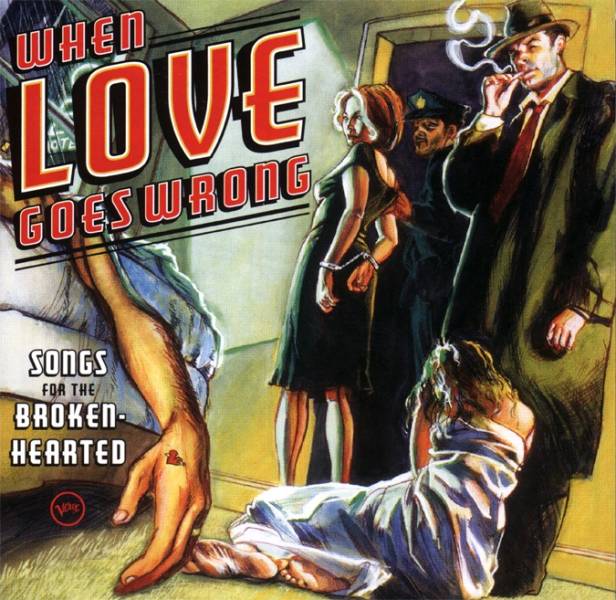
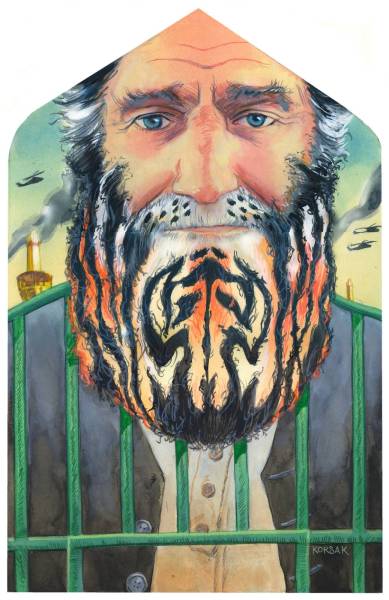
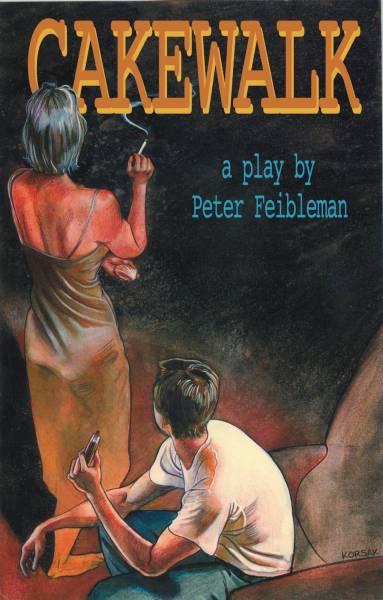 In 2008, the financial crisis sent Mark on a bit of a journey that ultimately landed him in Washington D.C. And there he found an interesting gig: graphic recording.
In 2008, the financial crisis sent Mark on a bit of a journey that ultimately landed him in Washington D.C. And there he found an interesting gig: graphic recording.
Mark Korsak: I end up getting a job in D.C. at a high end gallery that’s selling things like Winslow Homers and Renoirs. Before long, the desire to do illustration and design work again starts to kick in. So I began looking for that kind of work locally. D.C. is not a big publishing town, and I didn’t really know my way around.
What I ended up doing, was joining the Illustrator’s Club of D.C., Virginia and Maryland. The group is basically defunct now, but it was still a thing at the time. One of their gatherings was a mixer at this boutique strategy and consulting firm now called Throughline and run by a guy named Scott Williams. Among the people I met were these two guys, Greg Gersch and Jim Nuttle. We started talking and they told me about this thing called graphic recording. And I’m like, what’s that? They go, well, we go to these development meetings, we throw a big piece of paper up on the wall and write and draw what everybody’s saying at the meeting in real time while they’re saying it. I’m like, I don’t understand. That didn’t make any sense to me at all nor did I understand why anybody would even need that or do that kind of thing. But they sounded really enthusiastic, and I liked them and we became friends.
Ultimately, I got a chance to shadow Jim on a couple of jobs he did for this same strategy and design firm. Throughline uses graphic recording as their main way to engage clients. The first one I shadowed was for a new restaurant that these guys wanted to open. So the chef and his business parter came over to the firm and sat down at a table. Jim threw a big piece of paper up on the wall and that there was a facilitator in the room who would ask these guys questions—What kind of restaurant is it going to be? What kind of food is the restaurant going to serve? How many people will it seat? What’s the atmosphere you’re going for? The facilitator was basically coaxing these guys to talk about their vision and get it out of their head and up onto the paper.
That’s a powerful thing to be able to do because everybody’s walking around with stuff stuck in their head. And once you actually get it out of your head and see it in real life, that’s the first step to it becoming a reality. And that was huge. And I really got a kick out of that. I liked it. I liked everything about what was happening in the room.
Steven Belledin: How long did you shadow Jim before starting to do it yourself?
MK: From the time I first met Jim and heard what Graphic Recording was, until I quit my day job at the gallery was about 2 years. I actually only shadowed Jim once or twice, but there was another woman in DC named Stephanie Brown that pulled the local community together and gave me more shadow opportunities. She hosted a monthly Meet Up where she would talk shop, and eventually she asked me to help on a live conference gig. Halfway through capturing that day I had a eureka moment and it all suddenly made sense. Then next day I gave my 2 weeks at the gallery. Understand, I transitioned pretty quick. As an illustrator I was already familiar with the skill set, I just needed experience. There were other folks that started around the same time I did, but it took them 5 or more years to make the transition.
SB: What do you like so much about graphic recording?
MK: It’s gratifying in ways that I always thought traditional illustration would gratify me but never did. Number one, I didn’t have to do any research to get into the room. I just had to walk in the room and it was all improv. When the conversation ended and it was done, I put the marker down and I was done. I’m still transforming information as people are giving it to me, but instead of being written, it’s all information that is coming out as live as I’m drawing. When somebody throws a concept out there I have to put stuff down on the paper right away…and then everybody in the room is happy. Their minds are blown. They think I’m a wizard, you know? And that’s a great feeling because with traditional illustration, I’d deliver a piece of art, and that’d be the last I’d see of it. I’d get a check, but there’d be no reaction. But having that reaction was great! And it changed the world for me.
SB: How so?
MK: Having this new thing allowed me to open up and start thinking about the world and art and illustration or whatever (this path I’m on) in a whole new way—in a way I was never able to before. The struggle of having to take the job because you need to pay a bill? That disappeared. Suddenly I could start taking a job because I want to take the job or I could spend time working on my own work.
Now I have three or four personal projects that I’m working on that are phenomenally gratifying as well. And the opportunity to do those would never have happened had I not found graphic recording.
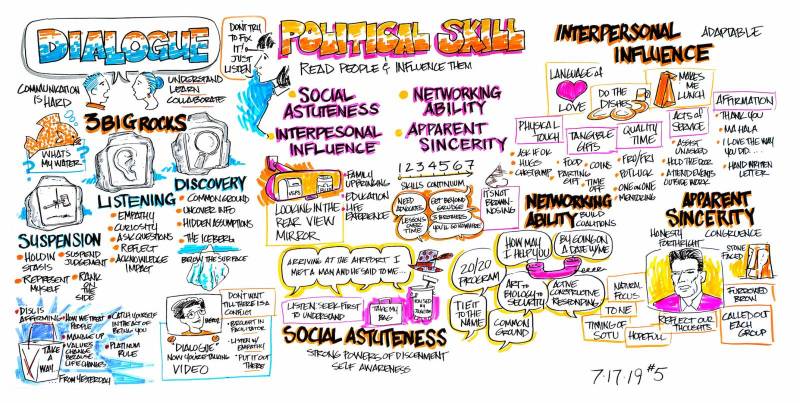 SB: That’s pretty awesome. Tell me about the process. How much information are you given before you walk into the room? Anything? An outline?
SB: That’s pretty awesome. Tell me about the process. How much information are you given before you walk into the room? Anything? An outline?
MK: Usually I don’t know anything. I know who the client is and somebody might tell me an idea of what the discussion is going to be. If there is any information before the discussion begins, they give it to me. But in a lot of cases what’s happening is, because they’re facilitated sessions, the person who’s putting the sessions together is really crafting it right up until the last moment. So I’ll know the job is for, say the Navy, but I won’t know what part, what it’s about, what have you.
SB: How big are you working? How big a sheet of paper is up on the wall?
MK: The paper is four feet by eight feet. I buy these rolls of paper. I buy—whatever—ten at a time. So I’ve always got them ready. I have markers that I keep in a Japanese toolbelt that I wear when I’m recording. The company that makes the markers is called Neuland—they’re German company—they’re refillable and Water-soluble.
SB: I’m really impressed by the size of your mental library. You’re pulling a huge variety of things from your head, and also take those things and boiling them down to their essence. I don’t think I’d be able to pull it off. How are you doing it?
MK: I don’t know. It’s whatever flashes through my head at the moment and then I just draw it. There’s no time for preciousness, no time for right or wrong. I mean, I do keep a pencil in my ear and I’ll sketch it out quickly and get the gist down. But I do that mostly for placement. Actually that’s the hardest part of the whole thing for me is the placement and composition of these things. That was my big question when I first started, when I was talking to Jim Nuttle. I asked him, how long does it take you to fill a sheet of paper? And are you tracking it as you’re going through? You know the meeting is going to be an hour long—at a half an hour into the meeting, am I halfway done with the page? So I’m certainly watching the clock while listening and planning placement as I go. Nine times out of ten there is an agenda, and in the agenda there will be points that they’re trying to get to at specific times. So I know when the conversation is going to shift or change.
Also, I’ve done hundreds of these. So over time, you come up with certain imagery that can be reused for all kinds of meetings, so I end up reusing visual metaphors constantly.
SB: That stands to reason. On the other hand, sometimes you gotta pull a portrait of Putin out of your head.
MK: Well, yeah. That’s what Google and cell phones are for.
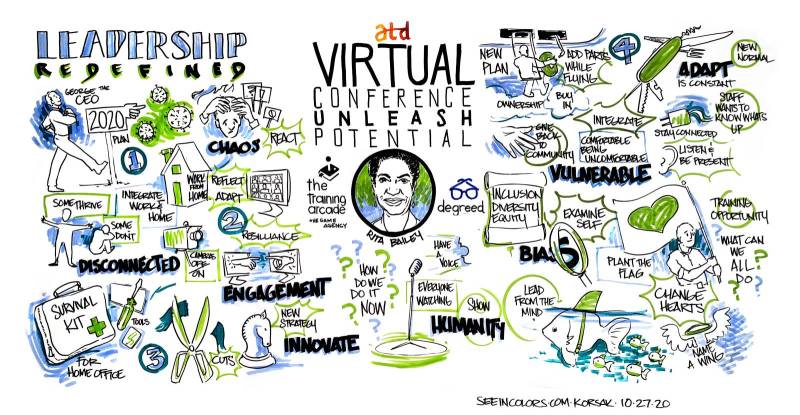 SB: Ah, so you have the time to pull out your phone and do a quick search in the middle of a discussion. In my head—and this is the disadvantage of not actually having seen you do one of these—but in my head, you’re constantly moving.
SB: Ah, so you have the time to pull out your phone and do a quick search in the middle of a discussion. In my head—and this is the disadvantage of not actually having seen you do one of these—but in my head, you’re constantly moving.
I can see the reuse of visual metaphor being advantageous in the respect that you can very quickly, bang that stuff out because you’ve done it multiple times. But when you’re introducing new information, be it a portrait of a specific person or a specific location, etc., you do have the time within the presentation to really quickly look it up?
MK: I try to, I’ve been drawing portraits my entire life and I know as a graphic recorder…
Let me back up here for a second. There’s really two kind of people that do graphic recording right now. One type are people like me that have an art background. The other group of people doing it are more like H.R. people and management people. And they’re the ones that are actively facilitating while doing it. They know what questions to ask and how to make a teams work together and all that kind of stuff.
I’m not that guy. Right? I don’t have those skills. Now as somebody who’s in this business, the stuff I’m going to lean on is the stuff that I know. Those guys who do the managerial stuff and stuff like that, they’re great, they do a fantastic job, but they’re not going to be able to draw a portrait. So I’m going to draw as many portraits as I can, as often as I can, because I know that’s going to differentiate me from them. And, you know, over time, it gets easier to do.
SB: Just for clarity, you’re not facilitating. You’re just recording what somebody else is facilitating.
MK: Right.
 SB: With the lack of preparation ahead of time, you’re essentially part of the audience in these meetings. How are you boiling down what’s being said in the bullet points that that you’re putting down?
SB: With the lack of preparation ahead of time, you’re essentially part of the audience in these meetings. How are you boiling down what’s being said in the bullet points that that you’re putting down?
MK: There are cues and things you can listen for in conversations, and that’s the kind of stuff that I really try to pay attention to. Conversations tend to follow the same route. If you actually listen closely to people when they come up with an idea, they’ll usually repeat it three or four times. They might say it a different way each time they say it, but they’re getting at the same idea.
In some cases, there’s this sort of conversation that I end up calling “popcorn” because when it’s a development session, you don’t know where the whole conversation is going to go. You don’t know what the solution is. You don’t know whatever problem these guys are trying to solve. The conversation happens in bits and pieces and each piece moves you on to another tangent.
Other meetings are much more structured, the facilitator will sit down with the client days before and figure out where they’re trying to get their team to go and then design a series of questions and exercises to get them to land in that spot. And those questions are pretty obvious cues. I sometimes get called on at the end of a meeting to bring it all together for everyone. This is a great moment because I get to engage the room and ask them if what I captured truly reflects what they think and feel. Because in the end the document I create is for them, not me. They’re going to live with it, not me. I’m a servant to the material. My ego is secondary to what’s happening in the room.
Another tremendous advantage to graphic recording is that it creates consensus among the people in the room. They experience the process together through what I draw. For example, someone can say the word “apple” but what you picture in your head might be different than what I picture. Maybe you see a green apple. Maybe there is a snake around it, or a bite out of it. Or maybe you think of an iPhone. But if I draw it for the room, now everyone is experiencing the same apple. So participants move through the process in lockstep.
One more advantage is retention. Because people are paying attention to the speaker AND me simultaneously, there is deeper engagement in the material. So many meetings these days are hampered by “Death by Powerpoint”. With a graphic recorder in the room the subject has a more profound impact. 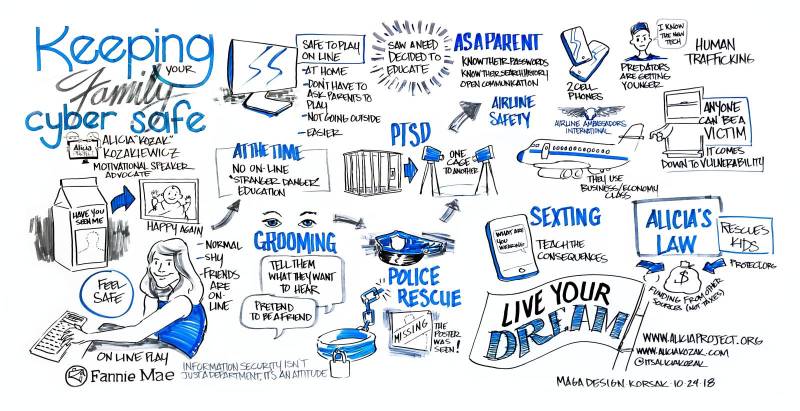 SB: What kind of meetings do you enjoy working at?
SB: What kind of meetings do you enjoy working at?
MK: I like keynote addresses because they tend to be a bit easier. The speaker has crafted their presentation. The keynote speaker is there on the stage, I’ll be off to the side. They’ll give a forty five minute speech and I’ll cover it all in that one forty-five minutes. Then there’s basically a visual representation of the entire speech for everyone to see and it hangs there for the whole conference. Afterwards people come over, take pictures of it, post on Instagram. Anybody that missed the keynote can now come over and look at the art I made and at least feel like they’re getting something out of it.
But the thing I gravitate toward is concepting—when a client has a problem and they’re trying to solve it. Sometimes they’re not even sure what the exact problem even is. So a lot of times, it’s the ten or so people in the room that each have a piece of the problem but have never seen the whole problem together all at once, holistically. Those are a lot of fun because those have a lot of discovery stuff built in.
SB: You mentioned the use of visual metaphors before can you talk more about that?
MK: Sure. Every job has one similarity and that is that there’s always a challenge that has to be met.
But “challenge” is an abstract word, right? You can just write the word “challenge” out and people can read it. But how do you describe “challenge” without using words?
Right now there’s two visual metaphors for this that I use a lot. One is a sword in the stone and King Arthur, pulling it out. As long as everyone in the room is generally from the same cultural background, it works really well. But it also can come with a little baggage. So the other metaphor that I use for challenge is an unsolved Rubik’s Cube, which has the advantage of having no connotations to it other than a problem to solve.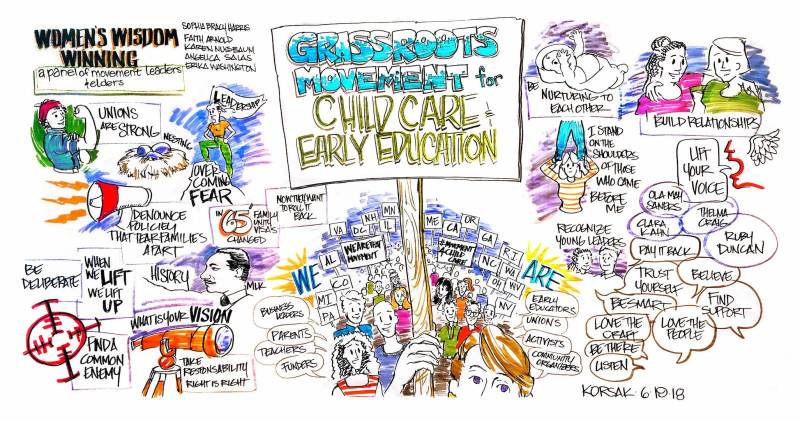 SB: So you sometimes recycle imagery, which makes sense, but how do you make these things specific to the audience?
SB: So you sometimes recycle imagery, which makes sense, but how do you make these things specific to the audience?
MK: One of the things I do when I’m capturing conversation is I really try and listen for the culture of the office. If everybody in the office is into football then I’m going to try using football metaphors in the pictures that I do, because I want the people in the room to react and to be engaged. When I’m really lucky, someone will make a comment or metaphor that is somehow specific to their office—that’s that’s just for them. Then I draw it and without fail they they go nuts for it.
There’s one in particular that I did for—it was government stuff again. The people in the meeting were talking about how difficult it is to get stuff done, because of red tape. They talked about one instance where things went really well and red tape wasn’t a problem. Someone referred to it as a government unicorn or something like that. And so I had to draw a unicorn, of course. But I drew it like an Evel Knievel kind of like unicorn. What a great little metaphor for them to say and the best part is that I didn’t have to come up with it—they came up with it. I just drew it. And when I drew it, everybody went nuts for it.
That’s the kind of thing that ends up being what everybody will remember from that day. It’s going to be the anchor for them to be able to recall what that whole day was about.
SB: One of the reasons I asked if you were getting information ahead of time is that these images tend to be pretty well designed and well composed.
MK: Thank you.
SB: They make sense as a whole. Is that solely from your experience in designing and illustrating? Was there something you were looking at? How did you get to a point where your stuff is absent of crammed corners and shoehorned information?
MK: I’ve done a lot of design work over the years and obviously I’ve done a lot of illustration, too. And a lot of those skills translate really well. There are a couple of really valuable rules of thumb going into this. Number one, you have to be able to draw three fonts well. They have to be three different fonts. That way you can use them to visually differentiate parts of the conversation. Number two is color. People use color in different ways. I use color to to denote the hierarchy or a shift in the conversation. But I tend to use a very limited palette of colors because I have found that I do better when I have more restrictions. So I typically start with one color, maybe two colors that play off each other. And then when the tone of the conversation changes, I’ll start changing colors. If they move on to a different subject or something, then I’ll move on to a different color.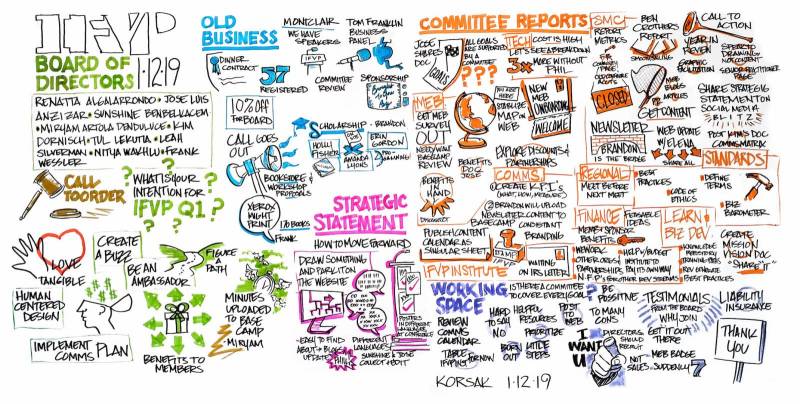 SB: How are you invoicing for this kind of work? Is it a day rate kind of thing or are you charging per page that you fill?
SB: How are you invoicing for this kind of work? Is it a day rate kind of thing or are you charging per page that you fill?
MK: When I started, the industry was doing things as half day or full day rates. There’s been some changes because of Covid. Things are moving digitally with Zoom meetings and stuff like that and as a result, people are starting to charge hourly instead of half day or full day.
SB: Under normal—non-pandemic—circumstances, I’d imagine there’s a lot of travel?
MK: Yes, that’s part of the fun. Much of the work I do is here in DC. DC is a hub for development work, but I’ve traveled all over the country doing this. Conferences are everywhere. I even went as far as Bangalore, India. That was a trip.
SB: Tell me about how Covid has changed the job.
MK: Right when Covid hit, I thought, this is all gonna go digital, I better get a new iPad. And I got one right out of the gate. And I drew with it, but it’s just not my thing at all. I don’t like it. So I bought some other equipment and set up a spot in my apartment where I could continue to do the job via Zoom. The problem is that I only have one camera, I don’t have the ability to do closeups and move the camera to follow the action. It’s just a wide, static shot. I could get more cameras and more software to switch between them and stuff to give better views of the page as I go, but I don’t want to be a television producer. That’s not what I signed up for. I’ve really been trying to cling to what the original idea of what graphic recording was, at least for me, and hold onto as much of that as possible.
I don’t know if that’s a good idea. I mean, right now I keep going back and forth, to be honest with you, because there are a lot of people in the industry that went completely digital and work on their iPads using digital whiteboard apps and just share their screen. But that’s inherently less performative and it’s just not what I’m into doing.
SB: Out of curiosity, before you got into this, had you ever been interested in anything performative, be it acting or stand up comedy?
MK: I played drums for years. I can’t say I was actually particularly interested in being in a performance. I like playing, I like being in a band and and I like creating music with friends. I’ve only performed in a band on stage, maybe like once or twice. That was probably 30 years ago. I actually didn’t really look at much of this stuff like performance until I was already doing it. So, you know, I was certainly aware of the fact that most of the time I’m walking into a room and everybody’s like—it’s DC., everybody’s an executive or they’re military or something like that they’re all wearing some kind of uniform. And I’m aware of the fact that I’m walking into the room as the creative guy. So I can play with that perception a little bit, and I play into it. It actually gets a much better reaction if I embrace it in the room rather than fight it. I don’t want to seem like one of suits or uniforms when I’m in the room. I want to seem like an outside party, and that’s going to bring something new into the room. But I know there’s other great recorders that when they go in, they wear a suit and they want to look like everybody else in the room so they don’t seem intimidating and appear to be more a part of the team. And that definitely has benefits. It definitely works, you know. But for me, I like to be a character. And I think that’s just part of my personality. I don’t go that far with it, you know, but I’m not going to walk in wearing a black suit. Yeah.
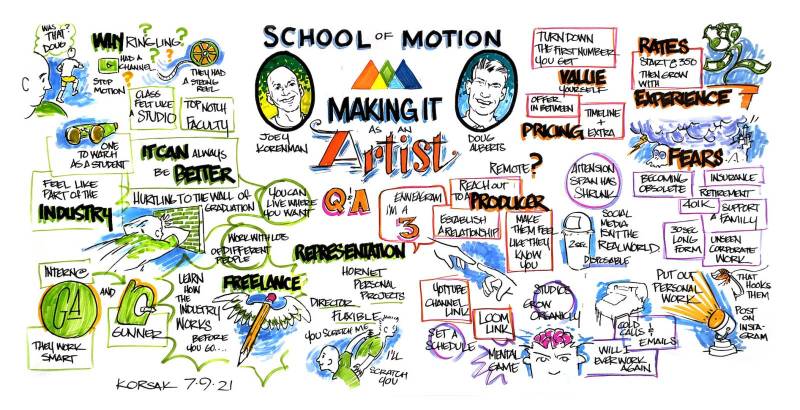 SB: If someone wanted to learn more about graphic recording, where would you recommend they look?
SB: If someone wanted to learn more about graphic recording, where would you recommend they look?
MK: It’s still a young enough industry where it really hasn’t been institutionalized yet. So there is no real authority. However, there is an organization called the IFVP (International Forum of Visual Practitioners) https://ifvp.org/ that is much like the Society of Illustrators, but for graphic recorders worldwide.
I should also reference a man that runs a company in San Francisco called The Grove, David Sibbit. He’s considered one of the founders of the industry, if not the Godfather. I’ve met him a couple times and he’s delightful. He’s got a real 1970’s creative Jim Henson-ish aura. I’d say they are more facilitators than illustrators. Besides services they offer a range of products like courses, templates and books.
https://www.youtube.com/watch?v=1tkNQst_Tck
https://www.amazon.com/Visual-Meetings-Graphics-Transform-Productivity/dp/0470601787
I was very lucky in that there was a really strong community of well known and generous practitioners here in DC I could rise up through.
SB: So what’s next for you?
MK: I’m still at it, but I’m steering in new directions. For years I have been working on a story about telegraph operators in the Civil War. That has turned into an elephant I don’t know how to ride, but it got me to graphic record it as a way to break the story down and make it manageable. As a result I’d love to take graphic recording to the entertainment industry and get hired by someone like Netflix and help them develop stories/content. Simon Pegg and Edgar Wright kind of do it for their collaborations. Director George Miller does it as well. I don’t know if you know this, but there was no script for Mad Max: Fury Road. Miller got together with illustrator Bredan McCarthy and pretty much graphic recorded the entire story so you could see the whole thing on one piece of paper. I’m convinced it’s the reason why Fury Road is such a great film. They initially conceive of it visually instead of through a traditional text script.
Pre Covid I went to a lot of concerts. I’ve been doing larger than life sized drawings from those performances. Once I get enough of them I’ll put together a gallery show.
But most recently, I’m getting involved in motion graphics. After seeing more an more work move to screens, especially through Coivd, I figured I could give my career more longevity if I learn how to make my drawings move. So I reached out to a friend and fellow SVA grad Fabian Tejada. Fabian is an Emmy winning animator responsible for the opening credits to Mad Men. He welcomed me into the community and pointed me in the direction of School of Motion, where I took an online After Effects class. I many not have the chops of the kids graduating today, but I’ve got experience, and a deep understanding of vision and storytelling, which can go farther than just knowing a skill set.
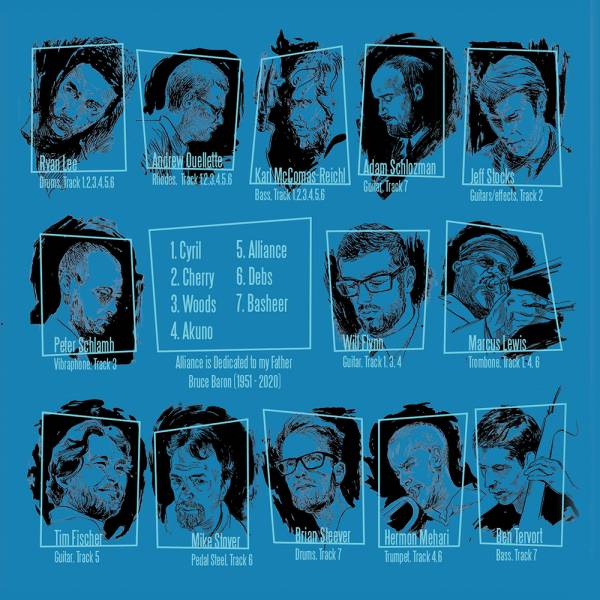
These last two are from a recent project Mark has done. The artwork, layout, and design were all his.


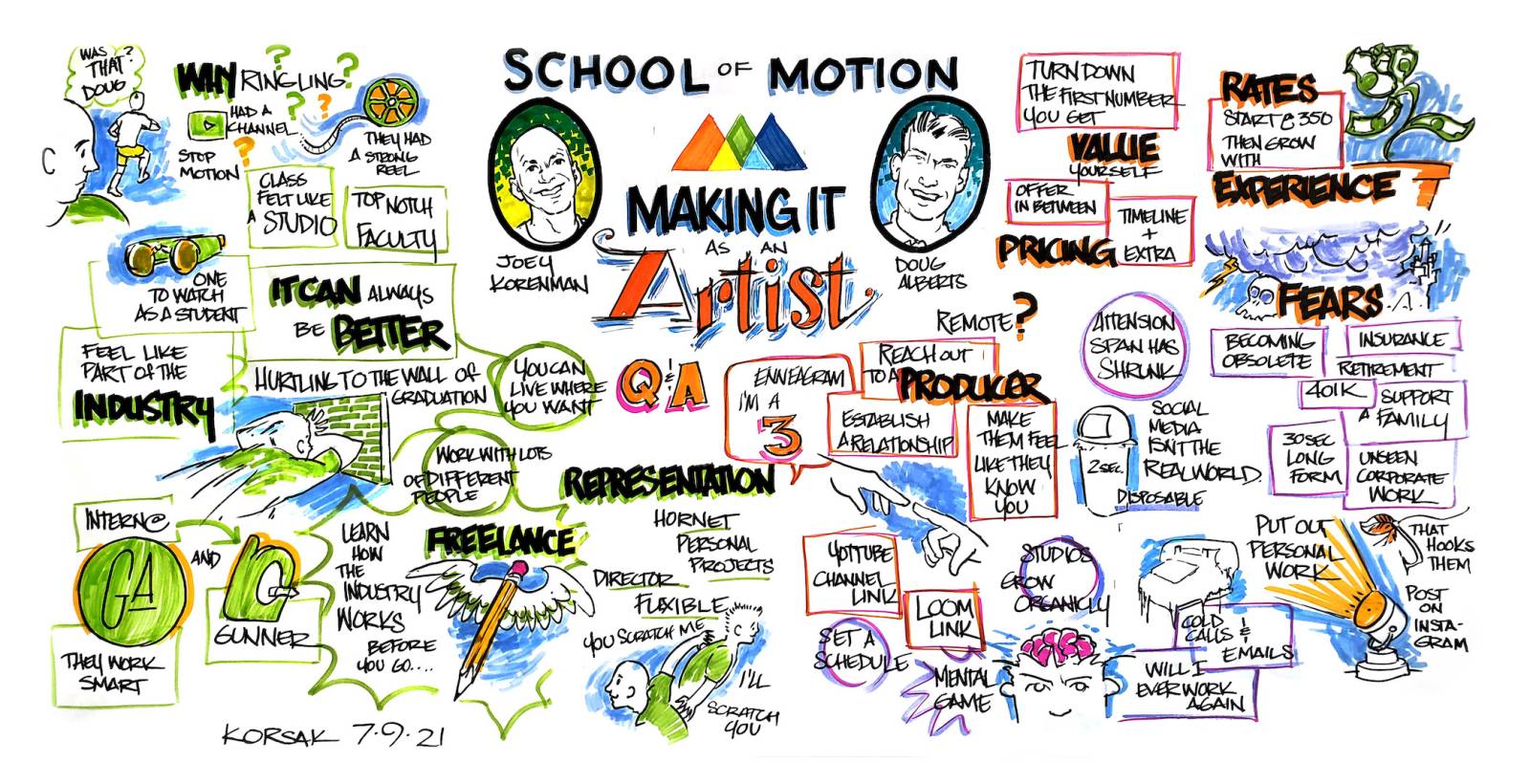
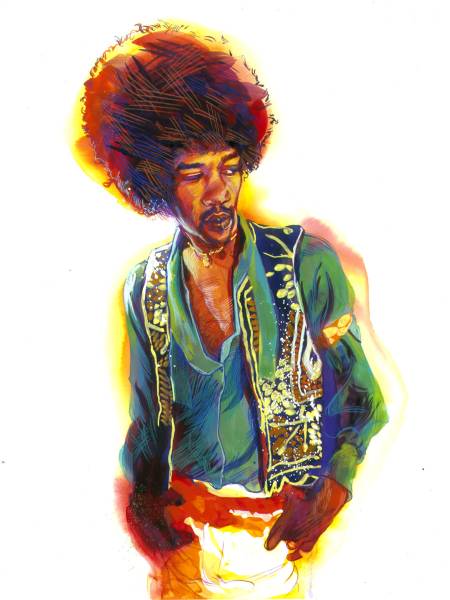

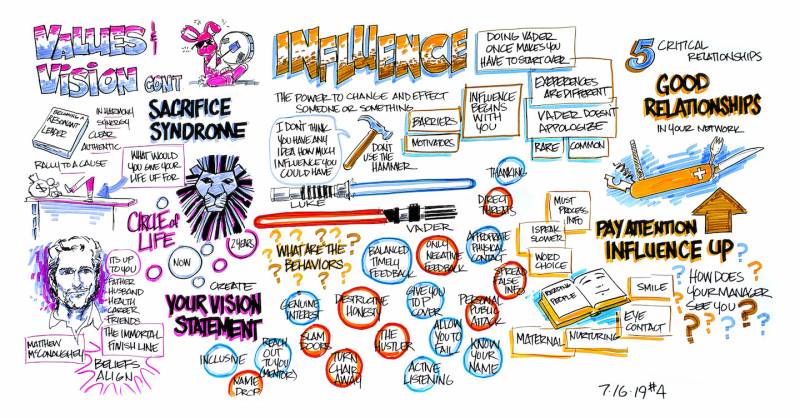

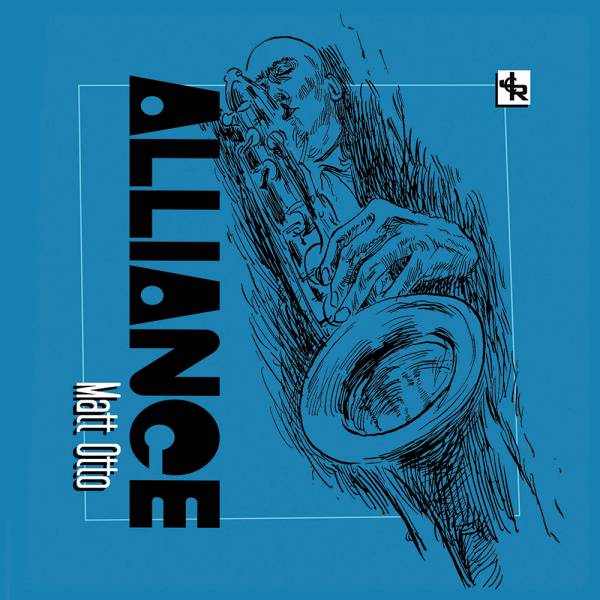
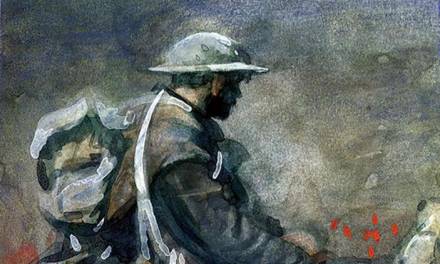

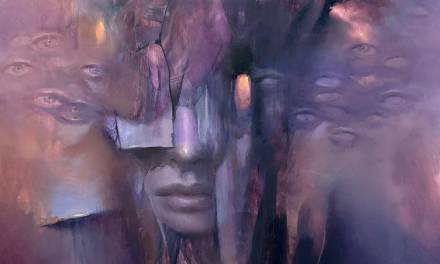
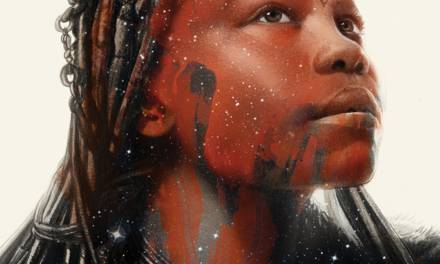

Awesome post! Thanks for taking the time, Mark. Loving those portraits too!